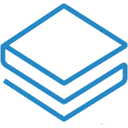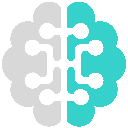-
 Bitcoin
Bitcoin $83,384.0103
-0.52% -
 Ethereum
Ethereum $1,808.8880
-0.27% -
 Tether USDt
Tether USDt $0.9996
-0.01% -
 XRP
XRP $2.1285
0.17% -
 BNB
BNB $590.6650
-1.02% -
 Solana
Solana $119.8001
-1.16% -
 USDC
USDC $1.0000
-0.01% -
 Dogecoin
Dogecoin $0.1672
-1.52% -
 Cardano
Cardano $0.6450
-2.14% -
 TRON
TRON $0.2358
-0.73% -
 UNUS SED LEO
UNUS SED LEO $9.1542
-0.44% -
 Chainlink
Chainlink $12.7548
-1.04% -
 Toncoin
Toncoin $3.2310
-2.48% -
 Stellar
Stellar $0.2517
-2.57% -
 Avalanche
Avalanche $17.3882
-4.28% -
 Shiba Inu
Shiba Inu $0.0...01223
-0.63% -
 Sui
Sui $2.1802
-2.73% -
 Hedera
Hedera $0.1601
-2.08% -
 Litecoin
Litecoin $82.2437
-2.91% -
 Polkadot
Polkadot $3.9303
-2.19% -
 MANTRA
MANTRA $6.2192
-1.01% -
 Bitcoin Cash
Bitcoin Cash $295.8200
-1.72% -
 Dai
Dai $1.0000
0.00% -
 Bitget Token
Bitget Token $4.4500
-1.78% -
 Ethena USDe
Ethena USDe $0.9991
0.00% -
 Pi
Pi $0.6522
50.32% -
 Monero
Monero $214.4466
-1.61% -
 Hyperliquid
Hyperliquid $11.5830
-3.12% -
 Uniswap
Uniswap $5.8275
-1.00% -
 OKB
OKB $54.4412
7.17%
Analysis of the basic principles of DAO and its operating methods
DAOs use blockchain and smart contracts for autonomous, transparent governance, allowing token holders to vote on proposals and manage funds democratically.
Mar 31, 2025 at 08:35 am
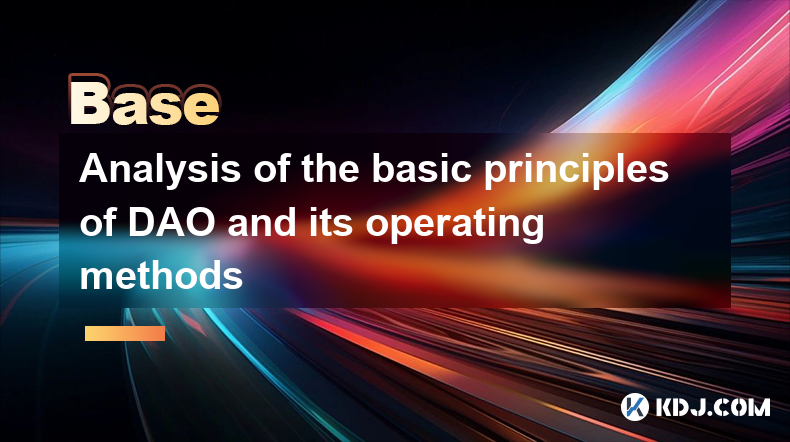
Understanding Decentralized Autonomous Organizations (DAOs)
DAOs represent a novel organizational structure leveraging blockchain technology to operate autonomously. Unlike traditional organizations with centralized control, DAOs distribute power among their members, governed by pre-defined rules encoded in smart contracts. These smart contracts, residing on a blockchain, automatically execute decisions based on predefined parameters, eliminating the need for intermediaries. This fosters transparency and immutability in decision-making processes. The core principle revolves around community governance and algorithmic execution.
The Foundation: Smart Contracts and Blockchain Technology
The functionality of a DAO hinges entirely on smart contracts. These self-executing contracts, written in code and deployed on a blockchain, automate processes and enforce agreements. Smart contracts define the rules governing a DAO's operations, including membership, voting mechanisms, treasury management, and fund allocation. The blockchain's decentralized and immutable nature ensures transparency and security, preventing manipulation or censorship. This is crucial for maintaining trust within the DAO's ecosystem.
DAO Governance: How Decisions are Made
DAO governance varies widely depending on the specific DAO's design. However, the common thread is the use of token-based voting. Members typically hold tokens representing their stake in the DAO. The number of tokens a member holds usually determines their voting power. Proposals are submitted, debated, and voted upon by token holders, ensuring a democratic process. Different voting mechanisms exist, including simple majority voting, weighted voting, and quadratic voting, each with its advantages and disadvantages.
Participation and Membership in a DAO
Joining a DAO usually involves acquiring the DAO's native token. This token grants access to participation in governance and potentially other benefits, depending on the specific DAO. The acquisition process varies, ranging from public token sales to airdrops or community contributions. Once a member holds the required amount of tokens, they can participate in governance, propose changes, and vote on proposals. The level of participation depends on the individual's interest and the time commitment they are willing to dedicate.
DAO Treasury Management and Fund Allocation
DAOs often manage a treasury of funds, usually in cryptocurrency. The treasury is used to fund DAO operations, projects, and initiatives. The allocation of treasury funds is typically governed by the DAO's smart contracts and voting mechanisms. Proposals for fund allocation are submitted and voted on by members, ensuring that funds are used in alignment with the DAO's goals and the community's preferences. Transparency in treasury management is vital for maintaining trust and accountability.
The Different Types of DAOs
The decentralized autonomous organization landscape is diverse, with DAOs catering to various purposes and employing different governance structures. Some DAOs focus on specific projects, such as developing decentralized applications (dApps), while others act as investment funds or grant-giving organizations. The governance models can range from simple majority voting to more complex systems incorporating quadratic voting or delegated governance, each offering a unique balance between efficiency and inclusivity.
Steps Involved in Creating a DAO
Creating a DAO involves several key steps:
- Define the DAO's purpose and goals: Clearly articulate the DAO's mission and objectives.
- Design the DAO's governance structure: Determine the voting mechanisms, membership requirements, and decision-making processes.
- Develop the smart contracts: Write and audit the smart contracts that will govern the DAO's operations.
- Deploy the smart contracts to a blockchain: Choose a suitable blockchain and deploy the smart contracts.
- Launch the DAO and attract members: Market the DAO and attract individuals who align with its goals.
- Establish ongoing operational procedures: Define processes for proposal submission, voting, and fund management.
Risks and Challenges Associated with DAOs
While DAOs offer many benefits, they also present challenges:
- Security vulnerabilities: Smart contracts are susceptible to bugs and exploits, potentially leading to loss of funds.
- Governance challenges: Reaching consensus among a large and diverse group of members can be difficult.
- Legal and regulatory uncertainty: The legal status of DAOs is still evolving, creating uncertainty.
- Sybil attacks: Malicious actors could create multiple identities to manipulate voting outcomes.
- Lack of accountability: Determining accountability for actions taken by the DAO can be challenging.
Common Questions and Answers
Q: What is the difference between a DAO and a traditional company?
A: DAOs are decentralized and operate autonomously based on pre-defined rules encoded in smart contracts, unlike traditional companies with centralized control and hierarchical structures.
Q: How secure are DAOs?
A: DAO security depends heavily on the robustness of their smart contracts. Thorough audits and security best practices are crucial to mitigate risks.
Q: How can I participate in a DAO?
A: Participation usually involves acquiring the DAO's native token, which grants voting rights and other benefits. The specific requirements vary depending on the DAO.
Q: What are the benefits of using a DAO?
A: Benefits include transparency, immutability, community governance, and automation of processes.
Q: What are the risks associated with DAOs?
A: Risks include smart contract vulnerabilities, governance challenges, legal uncertainty, and potential for manipulation.
Q: What blockchain platforms are commonly used for DAOs?
A: Ethereum is currently the most popular blockchain for deploying DAOs, but other platforms like Solana and Polygon are also gaining traction.
Q: Are DAOs regulated?
A: The regulatory landscape for DAOs is still evolving and varies significantly across jurisdictions. There is currently no universally accepted regulatory framework.
Q: Can anyone create a DAO?
A: Technically, yes. However, creating a successful DAO requires careful planning, expertise in smart contract development, and a strong community.
Q: What is the future of DAOs?
A: The future of DAOs is uncertain, but they have the potential to revolutionize organizational structures and empower communities. However, significant challenges remain to be addressed.
Disclaimer:info@kdj.com
The information provided is not trading advice. kdj.com does not assume any responsibility for any investments made based on the information provided in this article. Cryptocurrencies are highly volatile and it is highly recommended that you invest with caution after thorough research!
If you believe that the content used on this website infringes your copyright, please contact us immediately (info@kdj.com) and we will delete it promptly.
- SEC Commissioner Hester Peirce Lays Out a Bold Seven-Point Plan to Urge Congress to Slash Red Tape
- 2025-04-06 13:20:12
- Toncoin (TON) Whales Have Stepped Up Their Activity Level
- 2025-04-06 13:20:12
- Bitcoin.com News Sponsors the Bitcoin Takeover Podcast
- 2025-04-06 13:15:12
- Bitcoin [BTC] is nearing a critical threshold, with its price now close to tightly packed short liquidation levels.
- 2025-04-06 13:15:12
- Toncoin (TON) Price Prediction: Is $7.00 Within Reach as the Ecosystem Expands?
- 2025-04-06 13:10:12
- Binance Discontinues Spot Trading Pairs with Tether's USDt in the European Economic Area (EEA) to Comply with the Markets in Crypto-Assets Regulation (MiCA)
- 2025-04-06 13:10:12
Related knowledge
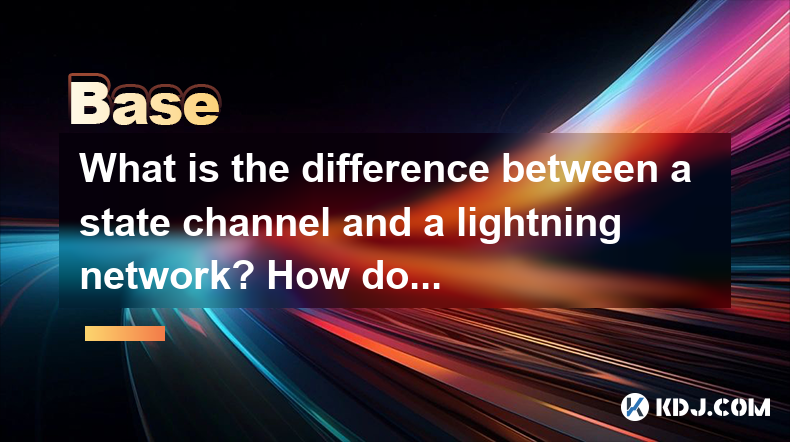
What is the difference between a state channel and a lightning network? How do they improve transaction efficiency?
Apr 05,2025 at 05:21pm
State channels and the Lightning Network are two significant technologies within the cryptocurrency ecosystem aimed at improving transaction efficiency on blockchain networks. Both solutions address the scalability issues of blockchain systems, particularly in handling a high volume of transactions quickly and with low fees. However, they operate differ...

Why is the oracle called the bridge between blockchain and the real world?
Apr 04,2025 at 04:00am
The concept of an oracle in the cryptocurrency and blockchain world is crucial for understanding how these decentralized systems interact with external data. The oracle is often referred to as the bridge between blockchain and the real world because it serves as a vital intermediary that fetches, verifies, and transmits off-chain data to the on-chain en...
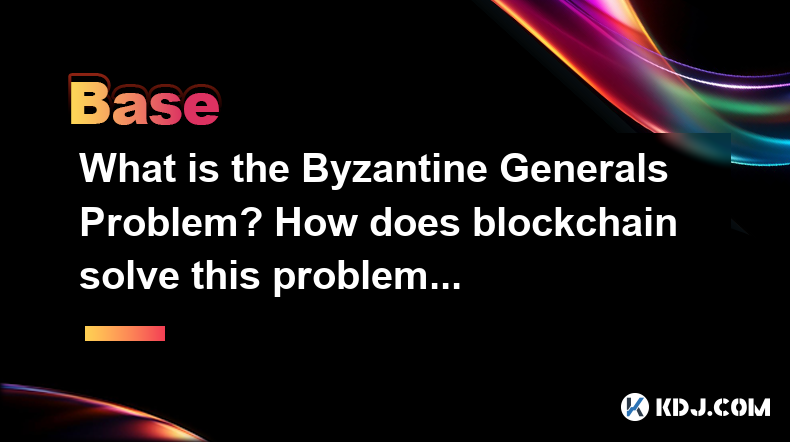
What is the Byzantine Generals Problem? How does blockchain solve this problem?
Apr 05,2025 at 06:29am
The Byzantine Generals Problem is a classic problem in the field of distributed computing and computer science, which has significant implications for the reliability and security of decentralized systems, including blockchain technology. This problem is named after a hypothetical scenario involving several generals of the Byzantine army who must coordi...
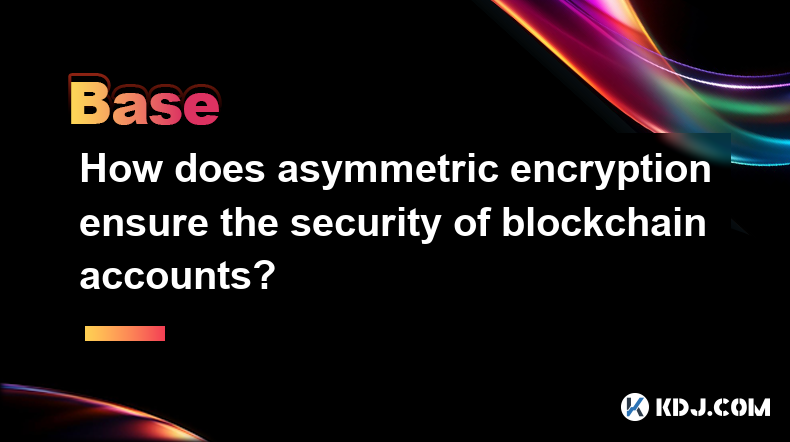
How does asymmetric encryption ensure the security of blockchain accounts?
Apr 06,2025 at 07:50am
Asymmetric encryption plays a critical role in securing blockchain accounts by providing a robust method of safeguarding private keys and ensuring secure transactions. This article delves into how asymmetric encryption works and why it is indispensable for the security of blockchain accounts. What is Asymmetric Encryption?Asymmetric encryption, also kno...

What role does the Merkle tree play in the blockchain? Why can it verify data integrity?
Apr 04,2025 at 01:29pm
The Merkle tree plays a crucial role in the blockchain, primarily due to its ability to efficiently and securely verify data integrity. This article will delve into the structure of a Merkle tree, its implementation in blockchain, and how it ensures the integrity of data. Understanding the Structure of a Merkle TreeA Merkle tree, also known as a hash tr...
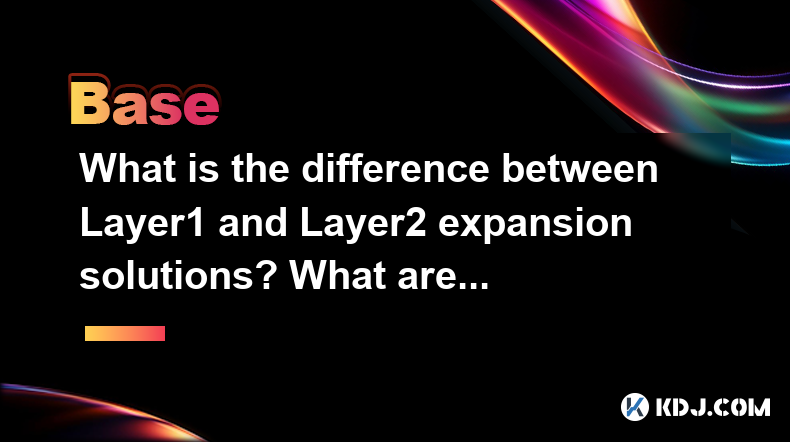
What is the difference between Layer1 and Layer2 expansion solutions? What are their advantages and disadvantages?
Apr 05,2025 at 12:49pm
In the world of cryptocurrencies and blockchain technology, scalability is a critical issue that developers and users alike grapple with. To address this, the industry has developed various solutions, primarily categorized into Layer1 and Layer2 expansion solutions. Understanding the differences between these two approaches, along with their respective ...

What is the difference between a state channel and a lightning network? How do they improve transaction efficiency?
Apr 05,2025 at 05:21pm
State channels and the Lightning Network are two significant technologies within the cryptocurrency ecosystem aimed at improving transaction efficiency on blockchain networks. Both solutions address the scalability issues of blockchain systems, particularly in handling a high volume of transactions quickly and with low fees. However, they operate differ...

Why is the oracle called the bridge between blockchain and the real world?
Apr 04,2025 at 04:00am
The concept of an oracle in the cryptocurrency and blockchain world is crucial for understanding how these decentralized systems interact with external data. The oracle is often referred to as the bridge between blockchain and the real world because it serves as a vital intermediary that fetches, verifies, and transmits off-chain data to the on-chain en...

What is the Byzantine Generals Problem? How does blockchain solve this problem?
Apr 05,2025 at 06:29am
The Byzantine Generals Problem is a classic problem in the field of distributed computing and computer science, which has significant implications for the reliability and security of decentralized systems, including blockchain technology. This problem is named after a hypothetical scenario involving several generals of the Byzantine army who must coordi...

How does asymmetric encryption ensure the security of blockchain accounts?
Apr 06,2025 at 07:50am
Asymmetric encryption plays a critical role in securing blockchain accounts by providing a robust method of safeguarding private keys and ensuring secure transactions. This article delves into how asymmetric encryption works and why it is indispensable for the security of blockchain accounts. What is Asymmetric Encryption?Asymmetric encryption, also kno...

What role does the Merkle tree play in the blockchain? Why can it verify data integrity?
Apr 04,2025 at 01:29pm
The Merkle tree plays a crucial role in the blockchain, primarily due to its ability to efficiently and securely verify data integrity. This article will delve into the structure of a Merkle tree, its implementation in blockchain, and how it ensures the integrity of data. Understanding the Structure of a Merkle TreeA Merkle tree, also known as a hash tr...

What is the difference between Layer1 and Layer2 expansion solutions? What are their advantages and disadvantages?
Apr 05,2025 at 12:49pm
In the world of cryptocurrencies and blockchain technology, scalability is a critical issue that developers and users alike grapple with. To address this, the industry has developed various solutions, primarily categorized into Layer1 and Layer2 expansion solutions. Understanding the differences between these two approaches, along with their respective ...
See all articles
















































































